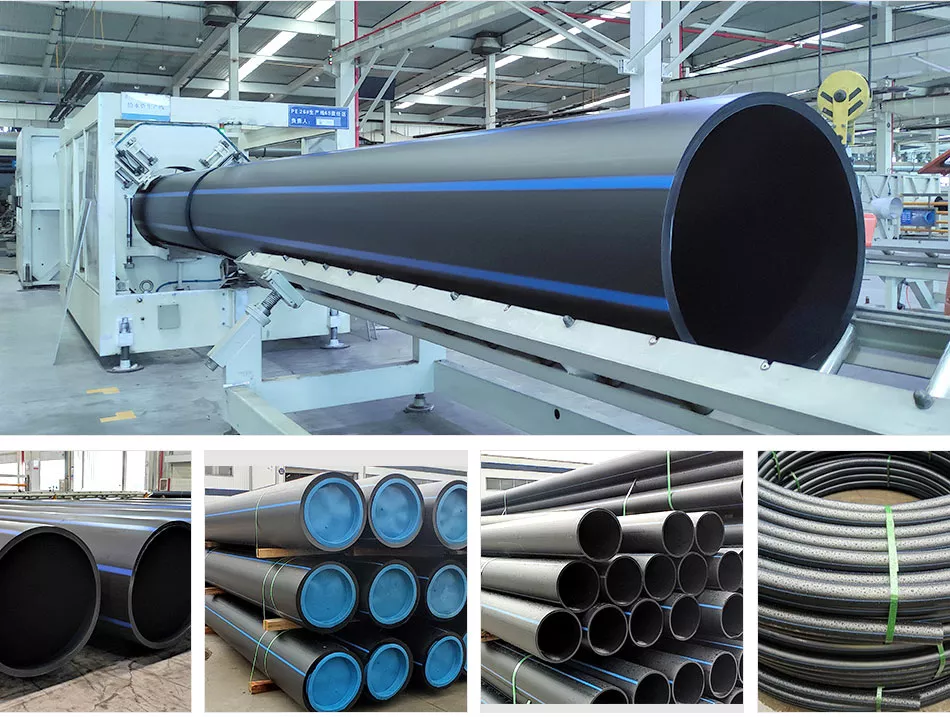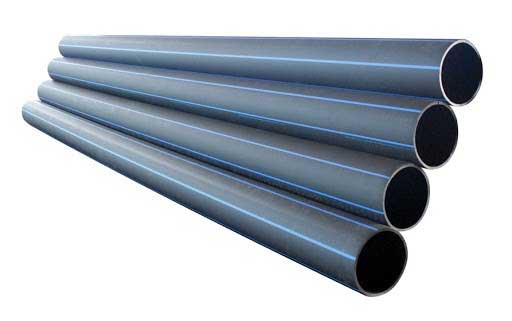Key Insights of custom hdpe pipe manufacturing Midland TX for Engineering Projects
The Necessary Actions for Successful Installment of HDPE Pipe in Your Following Job
Successful setup of HDPE pipe needs mindful preparation and implementation. Key steps include evaluating job requirements, preparing the site, and selecting correct joining methods. Each phase plays a crucial role in guaranteeing the stability and efficiency of the pipe. Comprehending these vital steps can greatly affect the overall success of the task - Texas hdpe pipe manufacturer. Nonetheless, the subtleties of each step may hold the trick to conquering common difficulties faced during installation
Understanding the Conveniences of HDPE Pipeline
High-density polyethylene (HDPE) pipeline uses numerous benefits that make it a preferred option for different applications. Its high resistance to deterioration and chemicals warranties resilience sought after atmospheres, substantially extending the life-span of setups. In addition, HDPE's flexibility permits for easier setup, particularly in difficult surfaces, as it can bend without breaking. The lightweight nature of HDPE pipe streamlines transport and handling, minimizing labor expenses throughout installation.
Moreover, HDPE pipe is known for its low rubbing coefficient, which improves liquid flow and lessens energy usage. Its seamless building and construction lowers the threat of leakages, adding to much better source administration and environmental management. On top of that, HDPE is recyclable, straightening with sustainable techniques and reducing ecological effect. On the whole, the mix of toughness, flexibility, and eco-friendliness makes HDPE pipeline an exceptional option for a variety of tasks, from water distribution to commercial applications.
Planning Your HDPE Pipeline Installment
When planning an installment of HDPE pipeline, mindful consideration of numerous vital factors is vital to secure an effective project. Initially, project supervisors need to assess the certain needs of the pipeline, including the intended usage, flow rates, and environmental conditions. Understanding these criteria will certainly guide the choice of suitable pipe dimensions and product quality.
Next, timelines ought to be established, considering procurement schedules and any kind of possible delays. Control with neighborhood authorities for permits and regulatory compliance is likewise vital. In addition, a detailed spending plan needs to be prepared, incorporating all costs related to products, labor, and equipment.
It is vital to involve a qualified group experienced in HDPE pipeline installment. Their competence will help minimize threats, warranty adherence to sector requirements, and ultimately contribute to the job's success. Detailed preparation lays the groundwork for a smooth setup procedure and resilient performance of the HDPE piping system.
Preparing the Website for Setup
Proper site prep work is essential for the effective installation of HDPE pipeline. Prior to setup starts, the site should be extensively assessed to ensure it fulfills all necessary demands. This includes surveying the ground for existing structures, utilities, and prospective hazards that might impede the installment procedure.

Proper elevation and positioning ought to be established to preserve a regular slope for water drainage purposes. Correct drain around the installation website is likewise vital to avoid water build-up, which can lead to issues down the line.
Strategies for Signing Up With HDPE Pipes
Accomplishing a trusted link between HDPE pipes is vital for ensuring the honesty and longevity of the installment. Numerous strategies exist for signing up with these pipes, each matched for different job needs. Blend welding is among the most usual techniques, utilizing heat to bond the pipeline ends together, creating a smooth and resilient link. This method can be additional categorized right into socket blend and butt blend, depending on the pipeline configurations.
Mechanical fittings are one more option, using clamps and threaded adapters to join areas of HDPE pipe. While generally faster to install, they might call for extra upkeep gradually. Electrofusion is a specific approach that includes making use of electric current to heat and fuse the pipes via specifically made installations, guaranteeing a solid bond. Selecting the suitable signing up with technique is essential, as it straight affects the overall performance and reliability of the HDPE piping system in the designated application.
Testing and Assessment of Installed Pipeline
The testing and evaluation of installed HDPE pipelines are critical to ensuring their functionality and longevity. This process incorporates aesthetic evaluation strategies, stress testing methods, and leakage discovery treatments to determine possible issues. By employing these methods, specialists can confirm the stability of the setup before it is placed into usage.
Visual Assessment Techniques
Employing effective visual assessment strategies is important for ensuring the stability of set up HDPE pipes. Examiners must methodically examine all noticeable areas of the pipeline to determine any type of signs of damages, misalignment, or improper installment. Secret indications to evaluate include joint honesty, surface irregularities, and connections. Inspectors may use devices such as amplifying great site glasses or cams to boost presence and detail. It is crucial to inspect for indications of ecological tension, such as twisting or excessive flexing, which might endanger efficiency. Regular paperwork of findings permits tracking modifications in time and aids overview needed fixings. By adhering to recognized aesthetic evaluation methods, task teams can especially minimize the threat of future failings and ensure long-term reliability of the piping system.
Pressure Testing Techniques
Aesthetic inspection works as an initial procedure, yet it is not sufficient by itself to guarantee the performance of installed HDPE pipes. Pressure testing techniques are essential for guaranteeing the honesty of these systems. Normally, hydrostatic screening is employed, where the pipelines are full of water and based on pressure levels above the desired operating pressure. This approach helps identify weaknesses or potential leaks. Pneumatically-driven screening can also be used, although it carries higher dangers as a result of the compressibility of air. No matter the technique chosen, adhering to sector requirements and security methods is crucial. After carrying out pressure tests, thorough documents is essential to verify the outcomes and verify that the installation satisfies all operational needs before proceeding to the following phase of the job.

Leak Discovery Treatments
Just how can one ensure that set up HDPE pipes are without leaks? Effective leakage detection treatments are crucial to protect the stability of the system. Visual examinations need to be carried out, looking for signs of water buildup or soil erosion around pipeline joints. Following this, pressure screening can validate the system's toughness. A typical technique is the hydrostatic test, where water is introduced under pressure, keeping track of for declines that suggest prospective leakages. In addition, advanced technologies, such as acoustic sensing units or infrared thermography, can discover leakages that might not be noticeable. Routine surveillance and maintenance additional add to the durability of HDPE pipes, guaranteeing they continue to be leak-free throughout their functional life expectancy. Correct documents of these procedures is important for compliance and future referral.
Maintenance Tips for Long-Term Performance
To ensure the long life of HDPE pipes, establishing a routine inspection routine is vital. This positive method enables the very early discovery of potential concerns, minimizing pricey repair services. In addition, executing proper cleansing techniques will certainly assist preserve peak performance and protect against accumulation that can influence weblink performance.
Routine Inspection Schedule
Although HDPE pipes are known for their resilience and resistance to deterioration, developing a normal inspection timetable is necessary for ensuring their long-lasting performance. Routine evaluations help identify prospective concerns such as leakages, this contact form joint integrity, and ecological effects that might affect the pipe's functionality. It is suggested that examinations occur a minimum of biannually, or extra frequently in atmospheres with extreme conditions. hdpe pipe in stock Midland TX. During these evaluations, visual checks ought to be conducted to identify indicators of wear or damages. Furthermore, utilizing innovation such as ultrasonic testing can supply further understandings right into the pipeline's condition. By executing an organized assessment timetable, job managers can proactively resolve issues, thereby expanding the lifespan of HDPE pipelines and keeping system performance
Proper Cleansing Techniques
Correct cleansing techniques play an essential function in maintaining the long-term efficiency of HDPE pipelines. Normal cleaning protects against the buildup of debris, sediment, and biofilm, which can lead to blockages and decreased circulation effectiveness. Operators needs to use approaches such as high-pressure water jetting or foam cleaning to successfully remove impurities without harming the pipeline surface area. It is vital to stay clear of using rough chemicals that may degrade HDPE material. In addition, arranged upkeep checks need to include aesthetic inspections for any kind of indications of wear or damage. Effectively educated employees ought to perform these cleansing procedures, guaranteeing compliance with safety and ecological regulations. By executing these practices, the lifespan of HDPE pipes can be considerably expanded, making sure suitable performance throughout their operational life.
Frequently Asked Concerns
What Are the Ecological Influences of HDPE Pipe Production?
The environmental influences of HDPE pipeline manufacturing consist of greenhouse gas discharges, energy intake throughout production, prospective plastic contamination, and obstacles in reusing. Nonetheless, HDPE's long life and resistance to corrosion can minimize some environmental issues.
Just How Does HDPE Pipeline Compare to Other Materials?

What Equipment Are Required for HDPE Pipe Setup?
Necessary devices for HDPE pipe setup consist of a blend equipment, pipe cutters, shovels, gauging tape, and security gear. Proper tools guarantees efficient, secure handling and installation, adding to the job's general success and integrity.
Are There Any Type Of Certain Rules for HDPE Pipeline Setup?
Certain guidelines for HDPE pipe installment differ by region, often regulated by neighborhood, state, or federal codes. Compliance with these policies guarantees safety, environmental protection, and functionality, making adherence necessary for successful project results.
Can HDPE Water Lines Be Recycled After Use?
Yes, HDPE pipelines can be recycled after usage. Their polycarbonate nature permits for reprocessing, making them appropriate for reusing into brand-new items. This sustainability element adds to ecological conservation and promotes circular economic climate techniques in building and construction.